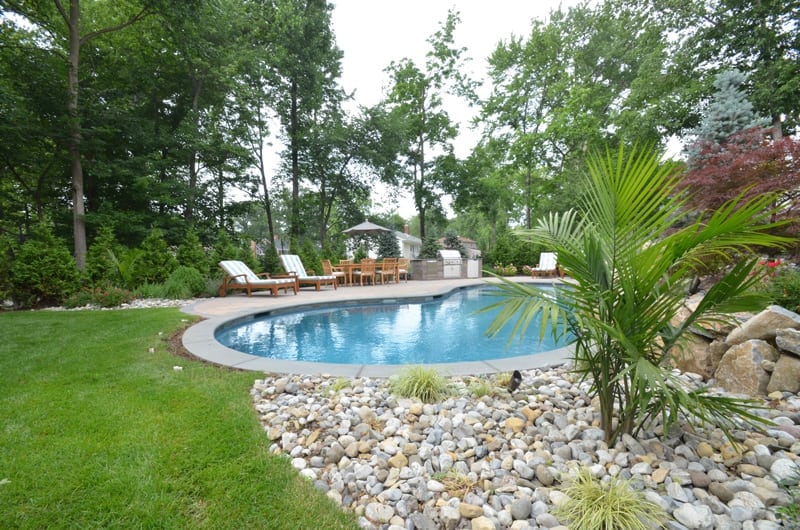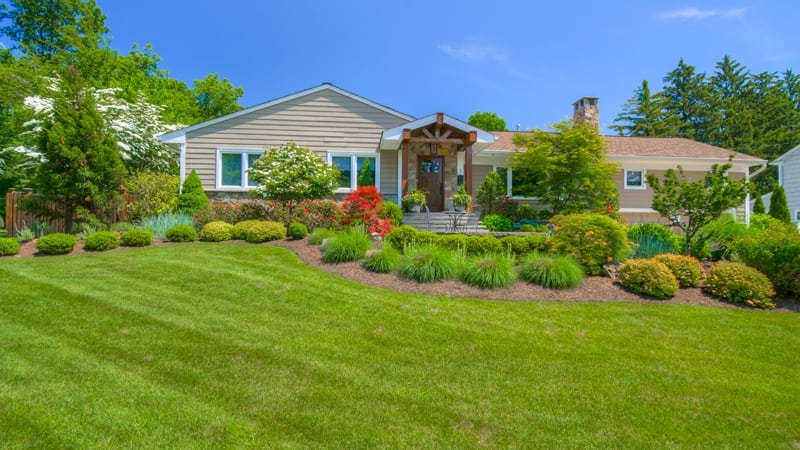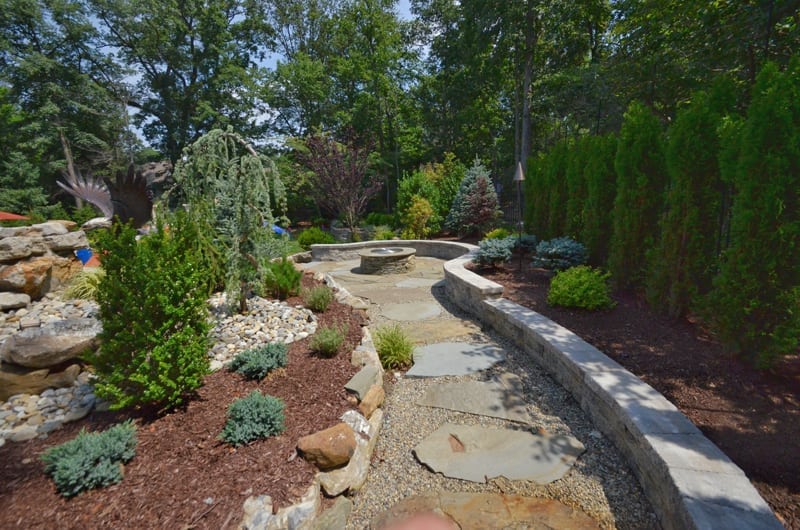Adding rock or mulch to your landscape is a wonderful way to beautify your property. However, it can be confusing to determine which is the best option for your outdoor living space. Both rocks and mulch for landscaping have many different variations in their use that will affect your decision. Let’s look at the landscaping pros and cons of rock vs. mulch to get a better idea of what will work best in your landscape
Benefits of Rock
 For the low-maintenance homeowner, rock is an excellent choice. Rock is inherently durable, making it a fantastic option for high-traffic areas, where it can’t be trampled and displaced easily.
For the low-maintenance homeowner, rock is an excellent choice. Rock is inherently durable, making it a fantastic option for high-traffic areas, where it can’t be trampled and displaced easily.
Rock can be economical, as it does not require frequent replacement. Aesthetically, rock can also be purchased in many different colors, tones, and textures, allowing you to achieve a truly custom and personal feeling to your landscaping.
Rocks are often used as a contemporary, crisp landscaping design element. It’s also available in many different sizes, and it’s excellent at facilitating water drainage. Some of the most common rocks used in landscaping are pea gravel, marble rocks, river rocks, beach pebbles and lava rocks.
Drawbacks of Rock
In terms of upfront supply and installation cost, rock can be much more expensive than mulch. It also may not be the best option in an area with significant plant and leaf debris, which will accumulate and stick on top of the rock.
Weeds popping up between the rocks can be unsightly, so rock will require installation of a barrier below. If you choose landscaping with rocks instead of mulch, you’ll also need to consider a form of edge retainer to prevent the rock from spilling out.
Benefits of Mulch
 Flowers thrive in landscaping beds with mulch, rather than rock. Organic mulch will slowly decay over time, potentially providing a fantastic source of nutrients for your plants. Mulch is significantly cheaper to purchase and install than rock. Additionally, mulch is available in different tones that will complement the colors and design of your front or backyard landscape. Typical colors of mulch are red, brown, neutral and black. The most common type of mulch is wood mulch.
Flowers thrive in landscaping beds with mulch, rather than rock. Organic mulch will slowly decay over time, potentially providing a fantastic source of nutrients for your plants. Mulch is significantly cheaper to purchase and install than rock. Additionally, mulch is available in different tones that will complement the colors and design of your front or backyard landscape. Typical colors of mulch are red, brown, neutral and black. The most common type of mulch is wood mulch.
Drawbacks of Mulch
Typically, mulch needs to be replaced every six to twelve months, as it naturally breaks down. It may also not be the best option for every type of plant. Russian sage and Lamb’s ear, for example, may prefer a bed of rocks that can more easily provide less water and drought-like conditions. While mulch does not require a different edging material, it can move easily and look messy if not properly maintained.
Experienced Landscape Designer
Consulting a residential landscaping company is the best course of action in deciding whether to use rock or mulch. Whichever landscaping idea you choose though, the good news is that you can always change. Contact us today to discuss your comprehensive custom landscape design strategy and find out whether rocks or mulch suit your property best.

